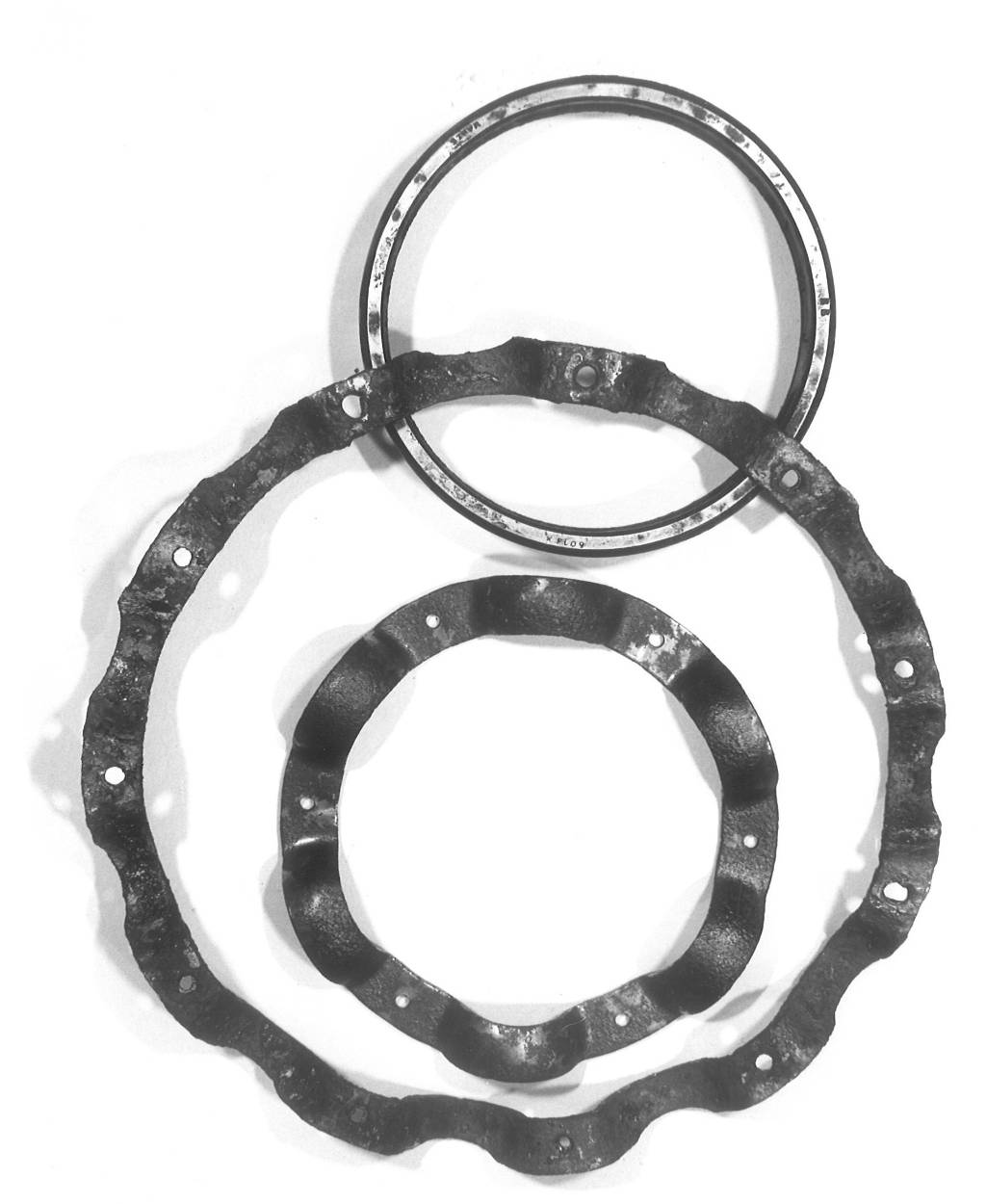Project Quarz
The ‘Anschluss’, or ‘Annexation’, to the German Reich in March 1938 meant that the rapid restructuring and expansion of industry for arms production that  Ball bearing cages from the tunnel. By early autumn 1944, ball bearing cages were being produced in the tunnel system under Wachberg hill. Photo: Wrobel, 1988.was already under way in Germany now also included Austria. At this time Steyr-Daimler-Puch AG was one of the largest metalworking companies in Austria. By the end of 1938 it had been incorporated into the “Reichswerke Hermann Göring” industrial complex and was expanding with financial help from the most important segments of the arms manufacturing industry. It produced military vehicles, motorcycles and bicycles, rifles and sub-machine guns, tanks, aero engines and ball bearings. The production of ball bearings had increased rapidly because of the German rearmament that began in 1933. During the Second World War, the military aviation industry grew to become the largest single purchaser of ball bearings.
Ball bearing cages from the tunnel. By early autumn 1944, ball bearing cages were being produced in the tunnel system under Wachberg hill. Photo: Wrobel, 1988.was already under way in Germany now also included Austria. At this time Steyr-Daimler-Puch AG was one of the largest metalworking companies in Austria. By the end of 1938 it had been incorporated into the “Reichswerke Hermann Göring” industrial complex and was expanding with financial help from the most important segments of the arms manufacturing industry. It produced military vehicles, motorcycles and bicycles, rifles and sub-machine guns, tanks, aero engines and ball bearings. The production of ball bearings had increased rapidly because of the German rearmament that began in 1933. During the Second World War, the military aviation industry grew to become the largest single purchaser of ball bearings.
The Nazi regime and the arms companies tried to deal with the wartime shortage of labour by using foreign civilian workers and prisoners of war on a massive scale. From 1942 onwards, these were joined by concentration camp prisoners. To this end, a series of subcamps was built near existing concentration camps. The first concentration camp to be built on Austrian territory, in Mauthausen in August 1938, was at times in control of over 40 subcamps over the course of the war. Prisoners in the subcamps were mainly used for forced labour in the armaments industry and in the construction of manufacturing plants. Steyr-Daimler-Puch, under its chief executive Georg Meindl, was the first arms manufacturer to use concentration camp prisoners in its factories on Austrian soil, including at Steyr-Münichholz where a subcamp of Mauthausen was established for this purpose in March 1942.
As a producer of armaments of particular importance for the war effort, Steyr-Daimler-Puch AG was a high-priority target for the Allies. Multiple air raids on German ball bearings production – including on the plant at Steyr-Münichholz in February and April 1944 – led to an acceleration of the process of relocating militarily important armaments production underground. Towards the end of the war, the shortage of workers in the German war economy was so severe that underground factories could only be constructed by using the labour of huge numbers of concentration camp prisoners. For Steyr-Daimler-Puch – in contrast to the Nazi leadership – building underground production sites with forced labour served a purpose beyond simply maintaining arms production. These concealed plants also enabled essential production capacities to be kept safe in preparation for the end of the war, which it was becoming increasingly clear was both inevitable and imminent. This meant that the concentration camp prisoners in these underground construction projects were also working in the interests of Austrian industry, which was already looking ahead to the post-war era.
Part of the tunnel system was constructed in full and used for production. Photo: Mühleder.
Under the codename ‘Quartz’, plans were made to construct an underground production plant inside the Wachberg, a hill near the village of Roggendorf that was composed mainly of quartz sand. It was to contain 65,000m2 of manufacturing space spread across multiple tunnels, and it would be built by concentration camp prisoners. The original plan was to set up huts to house the concentration camp prisoners in the immediate vicinity of the tunnel works in Roggendorf. But in April 1944 another location was chosen: the Birago Barracks. Named after the military engineer Karl Freiherr von Birago, the barracks had been built under the Austro-Hungarian Monarchy in 1912/13 and, in early 1944, were almost empty. For the Waffen-SS, it was an ideal site for conversion into a concentration camp.